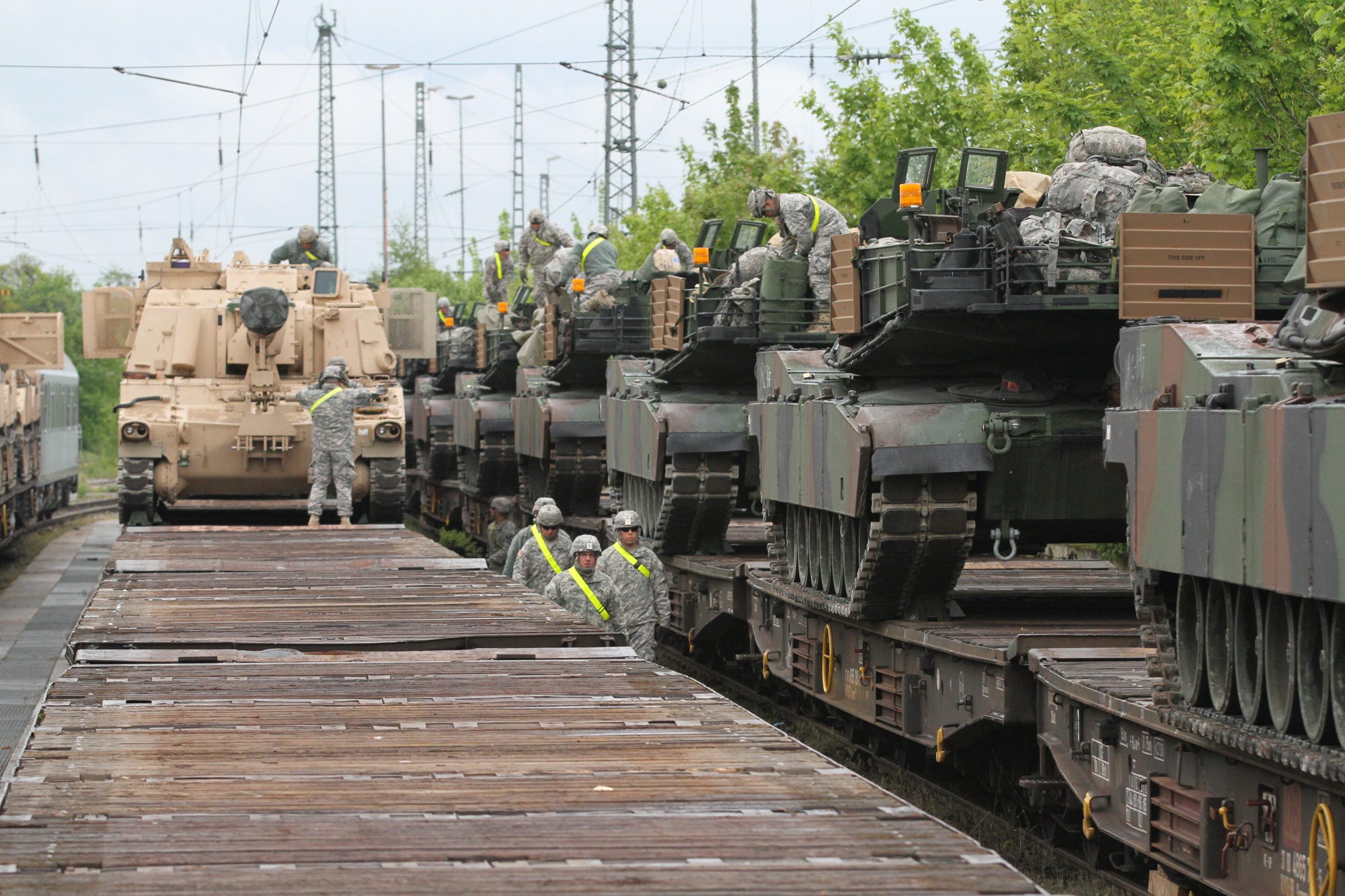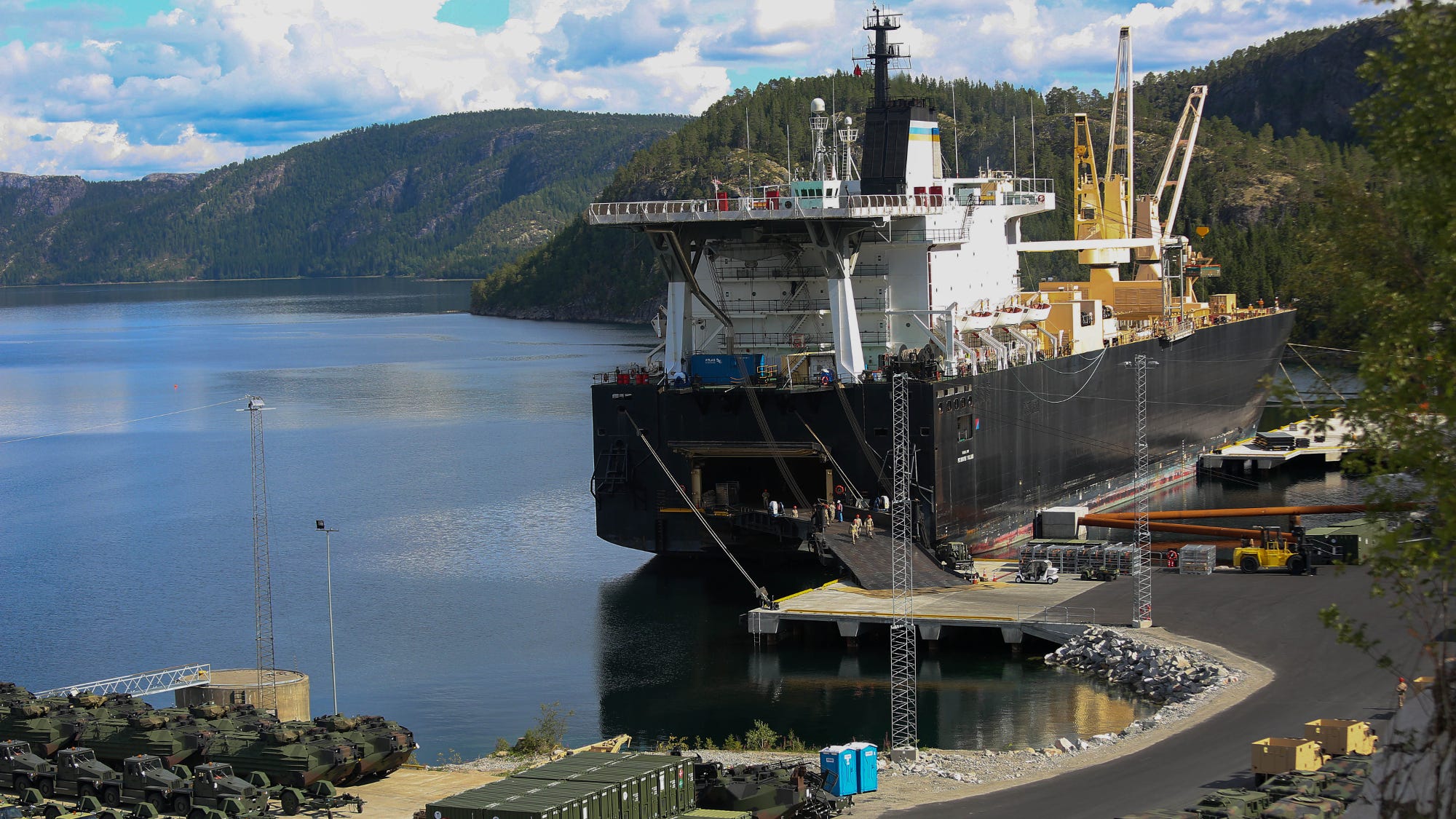How Do You Get All Those Army Tanks to Europe?
Unique units and private companies help American forces haul heavy gear
The Pentagon has been sending a bunch of tanks and other heavy vehicles to Europe in the last month or so. The Army needs them for training exercises—and as a warning to Russia.
But it ain’t easy getting a 70-ton M-1 Abrams main battle tank across a few thousand miles of ocean. American forces work with private companies to ship the vehicles across the Atlantic and to their final destinations.
This logistical prowess is one of the U.S. military’s greatest strengths.
Since 1987, U.S. Transportation Command has managed the bulk of military cargo around the world. The Defense Department’s logistics headquarters controls the majority of shipments to and from American facilities and war zones.
TRANSCOM can make use of the Air Force’s huge cargo planes and the Navy’s fleet of special cargo ships. Air Mobility Command’s hundreds of C-5s, C-17s and C-130s can rush troops and equipment to the front line in hours. Military Sealift Command possesses dozens of vessels ready to deposit vehicles and supplies into potential conflict zones or disaster areas.
The Army’s little-known Surface Deployment and Distribution Command occupies a more unique space. The ground combat command’s shipping arm has more than 3,000 uniformed personnel on its payroll—including reservist and members from the other services—plus civilians employees.
But private shipping companies on land and sea are the real key to getting most military equipment wherever it needs to go. And SDDC’s job is mostly to make sure all the shippers link up properly.
 Above and at top—U.S. Army troops lotanks and artillery are loaded onto trains in Germany. Army photos.
Above and at top—U.S. Army troops lotanks and artillery are loaded onto trains in Germany. Army photos.
“Whenever and wherever Soldiers, sailors, airmen, Marines and Coast Guardsmen are deployed, SDDC is involved in planning and executing the surface delivery of their equipment and supplies,” the command’s Websiteexplains.
All of TRANSCOM’s units are probably working harder than usual in Europe at the moment. Washington is doing its best to reassure its friend and allies as Russia gets increasingly aggressive in Eastern Europe.
The Pentagon has stepped up the number of training exercises and other military exchanges in Europe. These war games and other engagements all come under the code name Operation Atlantic Resolve.
Last month, SDDC personnel and civilian rail workers helped load Abrams tanks and Bradley fighting vehicles from the 1st Cavalry Division onto trains near Fort Hood in Texas. The Pentagon owns more than 2,000 rail cars.
Trains have been a major part of military operations since the industrial revolution in the 19th century. Sending cargo down the rails is generally cheaper and requires less manpower than a truck convoy.
Commercial train engines then hauled the cargo to the next destination—a private seaport along the Gulf of Mexico. TRANSCOM regularly contracts commercial facilities—and union longshoremen—to load up military gear.
We don’t know what port the vehicles from 2nd Battalion, 8th Cavalry went to. We also don’t know what ships were waiting for them.
But military cargo ships and private merchant vessels both handle these kinds of missions. The Navy often reserves its own cargo ships and their government crews for large operations or emergencies, and lets commercial vessels haul the less urgent stuff.
 A Military Sealift Command ship unloads Marine Corps vehicles in Norway. Marine Corps photo
A Military Sealift Command ship unloads Marine Corps vehicles in Norway. Marine Corps photo
In addition to shipping forces from North American to other continents for combat or training, the feds’ cargo fleet also helps shift gear in and out of stockpiles on land. The Pentagon maintains strategic stashes of vehicles, weapons and ammo all over the world.
For instance, a Navy container ship delivered Marine Corps tanks and other heavy armor to Norway in August.
Once a ship delivers its cargo across the ocean, SDDC personnel would work to get the equipment off the vessel and onto trains, trucks or even smaller boats for onward delivery. The 598th Transportation Brigade sends out cargo along European roads, rails and rivers to American bases and training areas.
Shipping military cargo by rail and sea can be time-consuming and expensive. In 2012, American commanders in Europe budgeted $4 million to move equipment to the region by sea—for just three training events.
In a crisis, Air Force cargo planes could also help rush troops and materiel to their final destinations. The flying branch recently flew Stryker armored vehicles from Germany to Latvia during a war game called Steadfast Javelin II.
Flying is the fastest but most expensive option. European Command spent almost $30 million airlifting troops and equipment for 17 war games in 2012, according to official reports. That means ships, trucks and trains will keep doing most of the military heavy lifting.
No comments:
Post a Comment